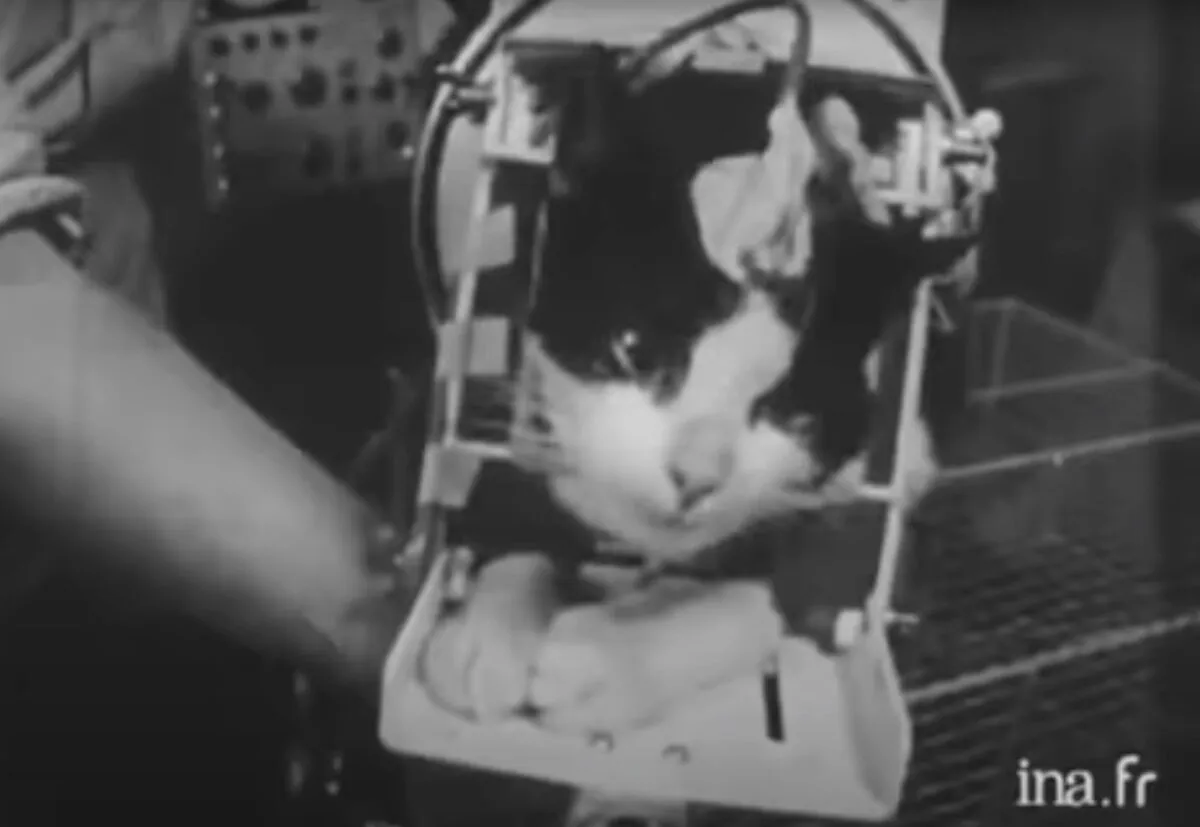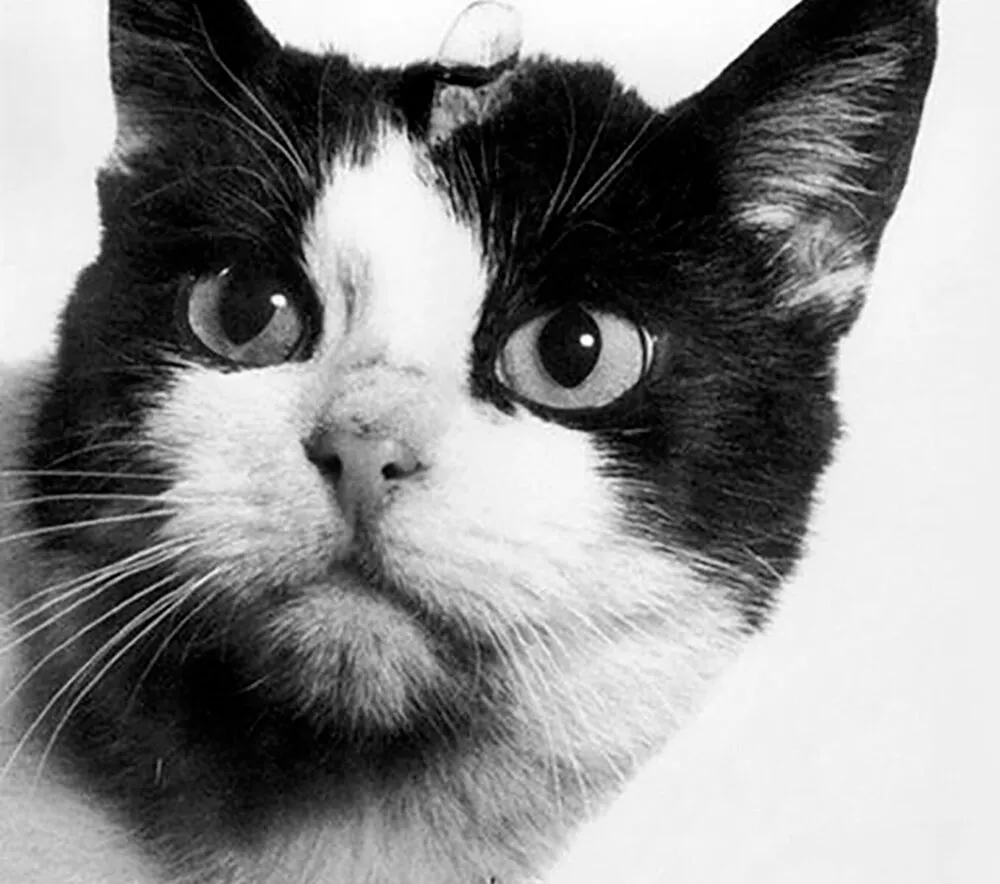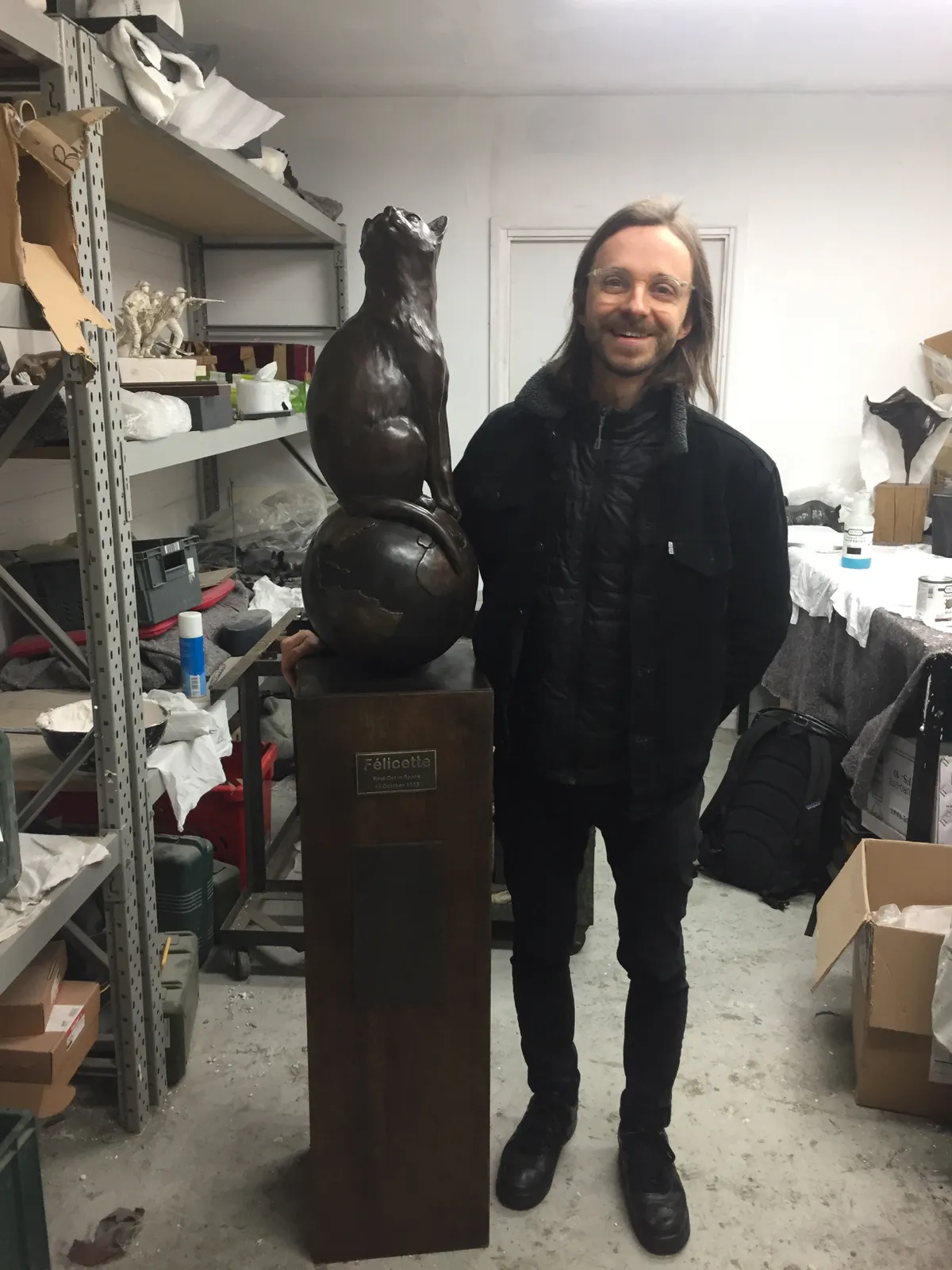The chances are, if you saw a crossword clue ‘Animal that flew into space (3)’, you’d think of Laika and write, “Dog”.
And it might be right, but there’s another correct answer.
In October 1963 a small, black and white cat called Félicette travelled where no feline had gone before – or has gone since.
But why is Félicette overlooked when Laika is so loved? Perhaps because her rocket looked like a firework compared to Laika’s powerful booster.
Or maybe it’s because she only flew to the edge of space, on the same kind of suborbital flight that billionaires now pay a fortune for.

How Félicette was chosen for spaceflight
Félicette’s story began in 1961 when, following the superpowers’ successful flights putting animals in space, France decided to stage a series of missions of its own, using cats instead of dogs or monkeys, hoping to collect data that would allow them to launch their own astronauts later.
Fourteen female cats were subsequently acquired by French CERMA space scientists.
To prevent the scientists from becoming attached to them, the cats were given numbers instead of names. They were also fitted with electrodes to record their brain activity.
The cats underwent ‘astronaut training’. To test their reaction to being confined, they were put into small containers for long periods.

They were also spun around in a centrifuge, simulating the G-forces of lift-off and re-entry.
Eventually six cats were chosen to go through to the next stage, including a tuxedo cat known then only as ‘C341’.
Laika flew into orbit atop a tall, chunky Sputnik rocket very similar to the Vostok booster that would carry Yuri Gagarin.
But with its tail fins and pointed nose, C341’s slim Veronique AGI booster looked more like a child’s drawing of a rocket.
It didn’t even use a conventional launch tower. Instead, its weight was supported by a quartet of long fins, like the legs of a Christmas tree stand.
Félicette's launch day
On 18 October 1963, just after 8am local time, the Veronique rocket blasted off from the Interarmy Special Vehicles Test Centre in the middle of the Sahara Desert in Algeria, carrying cat Félicette with it.
Coccooned inside her capsule, little C341 experienced 9.5 g, almost double the g-force the Apollo astronauts experienced as they launched to the Moon.
After reaching an altitude of 157km, C341 was only ‘in space’ for around five minutes. Inside her capsule she had no view of the Earth.
As the rocket began its descent, the capsule separated from the booster.
C341 experienced ‘only’ 7 g as she fell, until her capsule’s parachutes opened.
Thirteen minutes after lift-off the cone-shaped capsule landed, leaving C341 hanging upside down with her bottom sticking up in the air – a very undignified pose for any cat – until a helicopter arrived and she was retrieved.
With C341 safely back on Earth it was time for France to let the world know about her flight – and finally she had a name too.
In the absence of an actual name, the French media nicknamed the space cat Felix, after the naughty black and white cartoon cat from movies and television.
But C341 was female, so CERMA took the nickname and changed it to the feminine version: Félicette.
Sadly, like Laika’s, Félicette’s story did not have a happy ending.

Two months after landing she was euthanised so the scientists could carry out a postmortem to see how her body had been affected by her flight.
They later admitted they learned nothing useful from the autopsy. No more cats flew into space, and France never launched its own astronauts.
But although her story is less well-known than Laika’s, Félicette hasn’t been completely forgotten: in 2019 a lovely statue of her was unveilied at the International Space University Campus in Strasbourg.
Next time you're observing, perhaps you could take a moment to look up at the night sky and think of her too.
This article originally appeared in the October 2022 issue of BBC Sky at Night Magazine.

